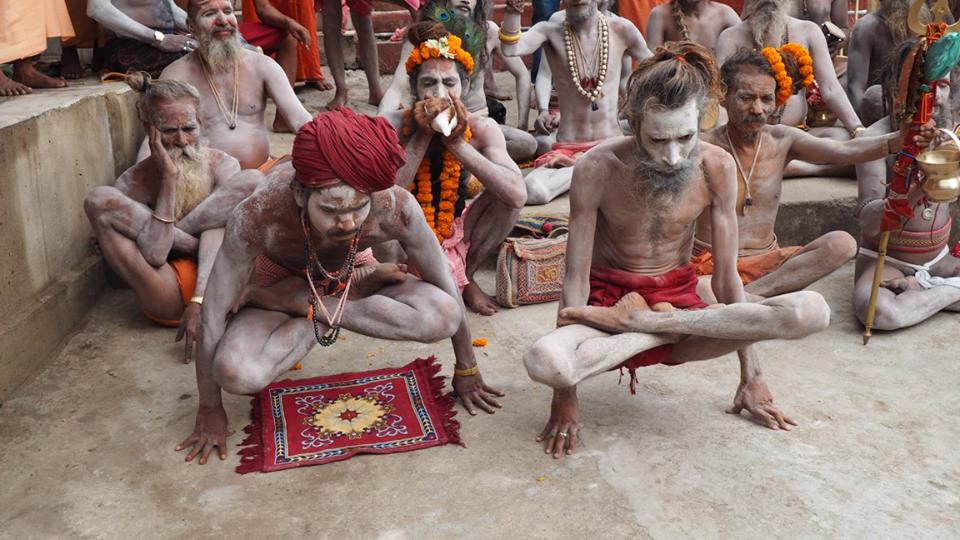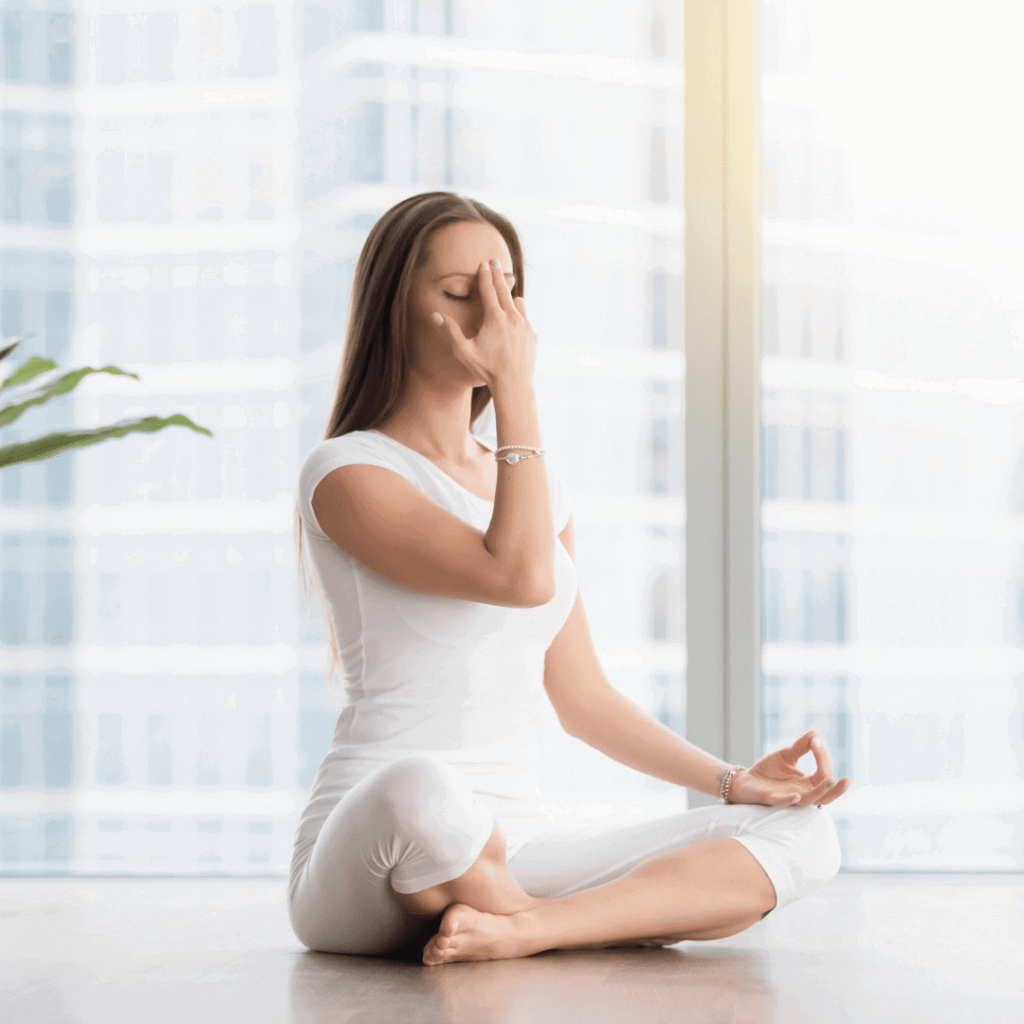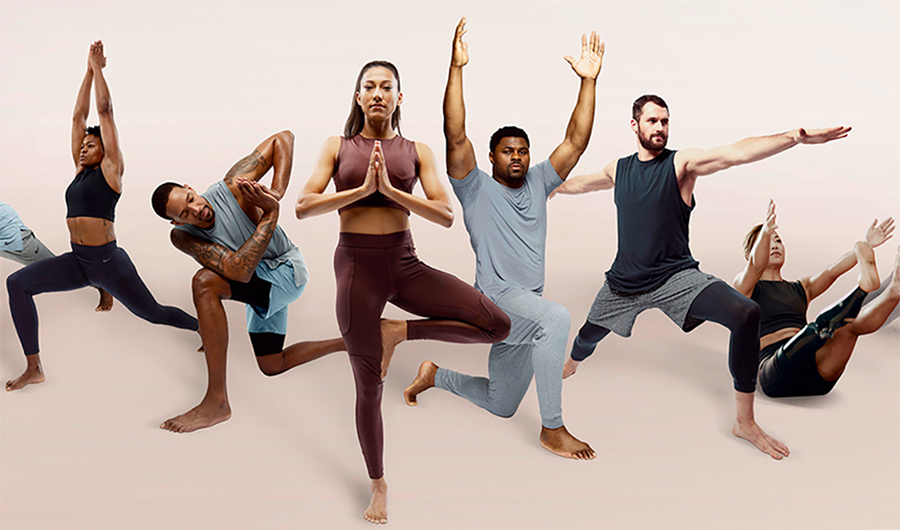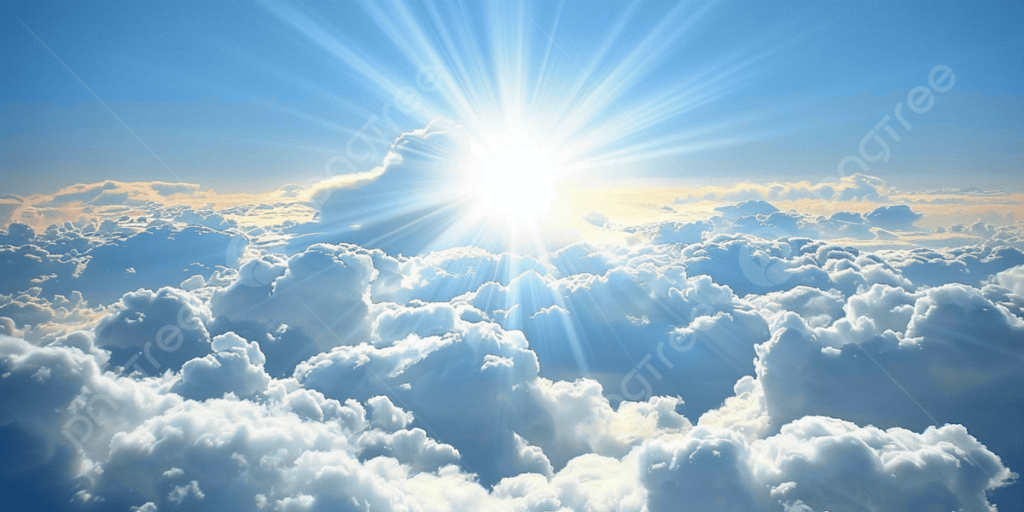
Yoga is a spiritual discipline based on a highly subtle science that focuses on bringing mind and body into harmony. It is both an art and science of living a healthy lifestyle. The name ‘Yoga’ comes from the Sanskrit root ‘Yuj,’ which means ‘to join, yoke, or unify.’ Yoga, according to Yogic texts, leads to the union of individual consciousness with that of the Universal Consciousness, implying complete harmony between the mind and body, as well as between Man and Nature.
Yogi and Yoga
Everything in the universe, according to current scientists, is only a manifestation of the same quantum firmament. A yogi is someone who has experienced this oneness of existence and has acquired the state of freedom known as Mukti, nirvana, or moksha. As a result, the goal of Yoga is to achieve Self-realization, which leads to ‘the state of liberation (Moksha) or ‘freedom’ (Kaivalya). Yoga practice should emphasise living with freedom in all aspects of life, as well as health and harmony. It also refers to an inner science that includes a multitude of techniques for realising this union and gaining control over one’s fate.
Yoga, commonly regarded as an ‘immortal cultural result’ of the Indus Saraswati Valley civilization, which dates back to 2700 B.C., has proven to be beneficial to humanity’s material and spiritual well-being. Yoga Sadhana’s entire identity is based on basic humanitarian values.
Due to the oral transmission of sacred texts and the secrecy of its teachings, yoga’s past is riddled with mystery and confusion. Early yoga literature was recorded on delicate palm leaves that were easily damaged, destroyed, or lost. Yoga’s origins may be dated back over 5,000 years, however, other academics believe it could be as old as 10,000 years. Yoga’s lengthy and illustrious history may be split into four distinct periods of development, practice, and innovation.
The Vedic Resemblance:
What exactly is the Veda? Do you know that yoga is referred to as a “Vedic science” and that the Veda is the origin of yogic teaching? Do you know that the Gayatri mantra (the most famous of all yoga mantras) is designed to assist you in connecting with your inner guidance? Or that the maha Mrityunjaya mantra is frequently used to promote health and happiness? Whether you realise it or not, you’ve been reciting passages from the Veda.
The Veda is the oldest extant book in humanity’s collection. It was written thousands of years ago in northern India and northeastern Pakistan. Paginating through this ancient literature can give you direct access to the thoughts and prayers of yoga gurus from over 5,000 years ago.
It’s difficult to think of the Vedas without also thinking of Yoga because the Vedas advocate spiritual knowledge gained via meditation, which is achieved through Yoga practice. Yoga is a term that originated in the Vedas, where the root for Yoga, ‘Yuj,’ means to connect, yoke, or harness, and is used to describe not only horses and chariots but also the mind and senses. The yoking of the Vedic chariot (Ratha) is symbolic of more advanced Yoga practises of mind control.
Because we are approaching Yoga with a contemporary modern understanding of Yoga as a primary asana or physical postures, several people today fail to see the Rigveda’s yogic essence. In the Vedas and classical yogic books, such as the Yoga Sutras, asanas have a minor role, with only two of the two hundred sutras devoted to them.
Yoga is addressed throughout the Vedas in a clear but unique way. Mantra Yoga is where the Vedas begin as mantras. This is not uncharacteristic of Yoga in general, as the Yoga Sutras emphasise Pranava, or Divine Word, as a primary principle of Yoga practice, meaning that Mantra Yoga is important. The Vedas are mantras in and of themselves, and chanting them is a form of Mantra Yoga. Even today, Mantra Yoga uses Vedic mantras like Gayatri and is based on the Sanskrit language, which has its origins in the Vedas.
Yoga and Karma
However, the mantra has a practical application in the form of ritual or karma. Karma Yoga is the counterpart to Vedic Mantra Yoga. The Vedas describe the initial rites that underpin the practice of Karma Yoga, which still makes considerable use of Vedic fire offerings in India today. Mantra is used to teach Dharma, or life’s rules. As a result, the Vedas promote sacrifice, giving, and assisting others, which is the foundation of Seva, or service, which is another major part of Karma Yoga.
Ritual can be defined as a sacred deed in which we approach the nameless and formless through the use of name and shape. Though there are similarities, the utensils, drugs, and materials utilised in the ritual are not used for their literal or practical value. The Vedic fire offerings are made to send messages to the upper worlds, not to generate heat or cook food. The Vedic fire that has been consecrated is more than just a fire. The things that are poured into it aren’t just used as firewood. They represent the heart’s movements and offers. Ritual is a method of enacting the sacred or Brahman. Yoga is created when a ritual action is directed inward.

A Brief History of Yoga and Its Evolution:
Yoga is thought to have been practised from the beginning of civilization. Yoga is a science that dates back thousands of years, even before the first religions or belief systems emerged. Shiva is regarded as the first yogi (Adiyogi) and the first Guru (Adi Guru) in yogic mythology. Adiyogi infused his vast knowledge into the fabled Saptarishis or “seven sages” on the banks of the Himalayan lake Kantisarovar some thousand years ago. This potent yogic science was spread throughout the world by the sages, encompassing Asia, the Middle East, Northern Africa, and South America.
Yoga Before the Classical Era
Over 5,000 years ago, the Indus-Sarasvati civilization in Northern India formed the foundations of Yoga. Yoga was originally referenced in the Rig Veda, one of the oldest religious writings. The Vedas were a collection of writings providing hymns, mantras, and rites for Vedic priests, known as Brahmans.
The Brahmans and Rishis (mystic seers) gradually refined and perfected yoga, documenting their practises and ideas in the Upanishads, a massive compilation spanning over 200 scriptures. The Bhagavad-Gîtâ, written approximately 500 B.C.E., is the most well-known of the Yogic scriptures. The Upanishads assimilated the Vedic concept of ritual sacrifice, teaching the ego’s sacrifice through self-knowledge, action (karma yoga), and wisdom (jnana yoga).
Pre-classical yoga was a jumble of disparate ideas, beliefs, and techniques that frequently clashed and contradicted one another. Patanjali’s Yoga-Sûtras, the earliest systematic presentation of yogaa, defines the Classical period. This treatise, written somewhere in the second century, defines the way of RAJA YOGA, sometimes known as “classical yogaa.” Patanjali divided yogaa into an “eight-limbed path” that outlined the methods and stages to achieving Samadhi, or enlightenment. Patanjali is widely referred to as the “Father of Yogaa,” and his Yogaa-Sûtras continue to have a profound influence on most modern yogaa systems.
Hatha Yoga has been widely promoted in India thanks to the efforts of T. Krishnamacharya, Swami Sivananda, and other Hatha Yogaa practitioners. In Mysore, Krishnamacharya established the first Hatha Yogaa school in 1924, and Sivananda created the Divine Life Society on the banks of the sacred Ganges River in 1936. B.K.S. Iyengar, T.K.V. Desikachar, and Pattabhi Jois were three of Krishnamacharya’s pupils who would carry on his legacy and popularise Hatha Yogaa.
Yogaa’s introduction to the West slowed to a trickle until Indra Devi founded her Hollywood yogaa centre in 1947. Many more western and Indian teachers have followed in their footsteps since then, popularising hatha yogaa and attracting millions of followers. Hatha Yogaa currently includes a variety of schools or styles, all highlighting the many benefits of the practice.
The Classical Era
The Classical period is tentatively defined as the time period between 500 BC and 800 A.D., which is also regarded as the most productive and influential period in the history and development of Yogaa. During this time, Vyasa’s commentaries on the Yogaa Sutras and the Bhagavad Gita, among other things, appeared. This time period can primarily be devoted to two of India’s greatest religious gurus, Mahavir and Buddha. The concept of Mahavir’s Five Great Vows – Pancha Mahavrata – and Buddha’s Ashta Magga or Eightfold Path – can be considered the origins of Yogaa sadhana.
The Bhagavad Gita, which thoroughly presents the concepts of Gyan yogaa, Bhakti yogaa, and Karma yogaa, provides a more explicit explanation. These three types of yogaa are still the pinnacle of human wisdom, and many today achieve serenity by following the ways outlined in the Gita. Apart from containing several parts of yoga, Patanjali’s yogaa sutra is most known for the eight-fold path of yogaa. Vyasa also penned an important commentary on the Yoga Sutra. During this time, the mind was given special attention, and it was clearly demonstrated through Yogaa sadhana. Both the mind and the body may be brought under control to experience equanimity.
The Post Classical Era
The Post Classical period is defined as the time period between 800 and 1700 A.D. when the teachings of famous Acharyatrayas such as Adi Shankracharya, Ramanujacharya, and Madhavacharya were prevalent. Suradasa, Tulasidasa, and Purandardasa’s teaching. During this time, Mirabai was a major contributor. Matsyendaranatha, Gorkshanatha, Cauranginatha, Swatmaram Suri, Gheranda, and Shrinivasa Bhatt are some of the renowned Natha Yogis of Hathayoga Tradition who popularised Hatha Yoga techniques during this time.
The period from 1700 to 1900 A.D. is known as the Modern Period, during which famous Yogacharyas such as Ramana Maharshi, Ramakrishna Paramhansa, Paramhansa Yogananda, Vivekananda, and others contributed to the advancement of Raja Yoga. Different forms such as Vedanta, Bhakti yogaa, Natha yogaa, and Hatha-yoga flourished throughout this time. The primary tenets of Hatha-yogaa were Gorakshashatakam’s Shadanga-yogaa, Hathayogaa pradipika’s Chaturanga-yoga, and Gheranda Samhita’s Saptanga-yogaa.
In today’s world, everyone believes in the benefits of yogaa practises for health preservation, maintenance, and promotion. Swami Shivananda, Shri T.Krishnamacharya, Swami Kuvalayananda, Shri Yogendra, Sri Aurobindo, Maharshi Mahesh Yogi, Acharya Rajanish, Pattabhijois, Sri Aurobindo, Maharshi Mahesh Yogi, BKS. Iyengar, Swami Satyananda Sarasvati,Swami Rama, and the like.
The Modern Era
Yoga gurus began to travel to the West in the late 1800s and early 1900s, gaining attention and disciples. Swami Vivekananda dazzled the attendees at the 1893 Parliament of Religions in Chicago with his talks on yoga and the universality of the world’s religions. In the 1920s and 1930s, there was a time when HathaYoga has widely promoted in India thanks to the efforts of T. Krishnamacharya, Swami Sivananda, and other Hathayoga practitioners. In Mysore, Krishnamacharya established the first Hatha Yoga school in 1924, and Sivananda created the Divine Life Society on the banks of the sacred Ganges River in 1936. B.K.S. Iyengar, T.K.V. Desikachar, and Pattabhi Jois were three of Krishnamacharya’s pupils who would carry on his legacy and popularise HathaYoga. Sivananda was a prolific author who founded nine ashrams and countless yogaa institutions across the world and wrote over 200 books on yoga.
Yoga’s introduction to the West slowed to a trickle until Indra Devi founded her Hollywood yogaa centre in 1947. Many more western and Indian teachers have followed in their footsteps since then, popularising hatha yogaa and attracting millions of followers. Hatha Yogaa currently includes a variety of schools or styles, all highlighting the many benefits of the practice.
Modern scholars have remarked on and marvelled at the striking similarities between ancient societies all throughout the world. The yogic system, on the other hand, found its highest expression in India. This civilization was created around a basic yogic way of living by Agastya, the Saptarishi who travelled across the Indian subcontinent.
The presence of Yogaa in ancient India is evidenced by a number of seals and fossil remnants from the Indus Saraswati valley civilization with Yogic motifs and figures practising yogaa. Tantra Yogaa is suggested by phallic symbols and seals of mother Goddess statues. Yogaa can be found in folk traditions, Indus Valley civilization, Vedic and Upanishadic legacy, Buddhist and Jain traditions, Darshanas, Mahabharat and Ramayana epics, Shaiva and Vaishnava theistic traditions, and Tantric traditions.
Primordial or pure Yoga
In addition, there existed a primordial or pure Yogaa that was manifested in South Asian mystical traditions. This was a time when Yoga was practised under the direct supervision of a Guru, and its spiritual significance was emphasised. It was a part of Upasana, and their ceremonies included yogic sadhana. During the Vedic period, the sun was given the utmost honour. Due to this impact, the practice of ‘Surya namaskar may have been invented later.
Pranayama was used in everyday rituals and as an oblation. Although Yogaa was practised prior to the Vedic period, (2700 B.C.) and forward until Patanjali’s time. The Vedas (4), Upanishads (108), Smritis, teachings of Buddhism, Jainism, Panini, Epics (2), Puranas (18), and other sources are the key sources from which we receive information on Yogaa practises and related literature throughout this period.
Getting Rid of Myths:
Many people limit their yogaa practice to HathaYogaa and Asanas (postures). However, only three sutras of the Yogaa Sutras are dedicated to asanas. Hathayogaa is, at its core, a technique that prepares the body to maintain higher levels of energy. The body comes first, followed by the breath, the thinking, and the inner self.
Yoga is also widely thought of as a health and fitness therapy or workout technique. While physical and mental wellness is natural outcomes of yoga, the purpose of the practice is far broader. “Yoga is about bringing oneself into balance with the universe.” It’s a method of connecting individual geometry with cosmic geometry in order to achieve the maximum level of perception and harmony.”
Yoga has never been viewed as a religion, belief system, or community; rather, it has always been viewed as a method for inner well-being. Regardless of one’s creed, nationality, or culture, anybody who participates in yogaa can receive its advantages. Traditional Schools of Yogaa: Different Traditional Schools of Yogaa emerged as a result of the various Philosophies, Traditions, lineages, and Guru-shishya parampara of Yoga, such as Jnana-yoga, Bhakti-yogaa, Karma-yogaa, Dhyana-yogaa, Patanjala-yogaa, Kundalini-yogaa, Hatha-yogaa, Mantra-yogaa, Laya-yogaa, Raja-yoga, Ja Each school has its own set of principles and practises that lead to Yogaa’s ultimate goal and objectives.
Yama, Niyama, Asana, Pranayama, Pratyahara, Dharana, Dhyana (Meditation), Samadhi /Samyama, Bandhas & Mudras, Shat-karmas, Yukta-ahara, Yukta karma, Mantra japa, and other Yogaa Sadhanas (Practices) are some of the most extensively practised Yoga Sadhanas (Practices).
Restraints are Yamas, and observances are Niyamas. These are regarded as prerequisites for Yogaa Sadhanas (Practices). Asanas, which have the power to bring about body and mind stability (‘kuryat-tad-asanam-sthairyam…’), consist of adopting numerous body (psycho-physical) patterns, which give the ability to hold a bodily position.(a stable knowledge of one’s structural being) over a significant amount of time.

Pranayam’s various poses:
Pranayama is the practice of becoming aware of one’s breathing and then consciously controlling it as the functional or vital basis of one’s existence. It aids in the development of mental awareness and the establishment of mental control. This is accomplished in the beginning stages by becoming aware of the ‘flow of in-breath and out-breath’ (svasa-prasvasa) through the nostrils, mouth, and other body openings, as well as the internal and external pathways and destinations. Later, through regulated, controlled, and monitored inhaling (svasa), this phenomenon is adjusted, resulting to the knowledge of the body space/s being filled (puraka), remaining filled (kumbhaka), and being emptied (rechaka) during regulated, controlled, and monitored expiration (prasvasa).
Pratyahara is the separation (withdrawal) of one’s consciousness from the sense organs, which allows one to maintain contact with external objects. Dharana refers to a broad field of attention (both inside and beyond the body and mind), which is commonly referred to as concentration. Dhyana (Meditation) is a combination of contemplation (inner focus) and Samadhi (integration).
Pranayama is related to the use of bandhas and mudras. They are regarded as advanced Yogic practices that primarily consist of adopting particular bodily (psycho-physical) patterns as well as breathing control. This improves mental control and lays the door for higher yogic accomplishment. Shat-karmas are clinical detoxification procedures that help to remove toxins that have built up in the body.
Yuktahara (Right Food and Other Inputs) promotes healthy eating habits and appropriate food. However, the essence of Yogaa Sadhana (The Practice of Yogaa) is the practice of Dhyana (Meditation) that aids in self-realization and transcendence. (Yoga as a Practice)
The Yoga Structures and Foundations:
Yoga focuses on the body, mind, emotion, and energy levels. This has resulted in four basic categories of Yoga: karma yoga, in which the body is used; bhakti yoga, in which the emotions are used; gyana yoga, in which the mind and intellect are used; and kriya yoga, in which the energy is used.
Each of the Yoga systems we practise would fall into one or more of these categories. Each person is a unique combination of these four elements. ” All of the ancient comments on Yoga emphasise the need of working with a Guru.” This is because only a Guru can blend the appropriate combination of the four primary routes, as each seeker requires.
Yoga Instruction:
Yoga Education was traditionally passed down through the generations by family members who were knowledgeable, experienced, and wise (similar to the education provided in western convents), and thereafter by Seers (Rishis/Munis/Acharyas) in Ashramas (compared with monasteries). On the other hand, yoga is concerned with the person, or ‘Being.’ A good, balanced, integrated, truthful, clean, transparent individual is assumed to be more valuable to oneself, family, society, nation, nature, and humanity as a whole. It is based on the concept of ‘being orientated.’ Various living traditions and literature have defined the details of working with the ‘being oriented’ component, and the practices that contribute to this crucial subject is known as ‘Yoga.’
Many prestigious Yoga Institutions, Yogaa Colleges, Yoga Universities, Yogaa Departments in Universities, Naturopathy colleges, and private trusts and societies now offer yogaa education. Yoga Clinics, Yogaa Therapy and Training Centers, Yogaa Preventive Health Care Units, Yogaa Research Centers, and other Yogaa-related facilities have been established in hospitals, dispensaries, medical institutes, and other setups for therapeutic purposes.
In India, the land of Yoga, several social practises and rituals demonstrate love for ecological balance, tolerance for multiple systems of thought, and compassion for all creations.
Yogaa Sadhana of all hues and colours is thought to be a panacea for living a meaningful life. It is a worthy practice for individuals of all religions, ethnicities, and nationalities because of its focus on total health, both individual and social.

Conclusion:
Today, millions of people all around the world benefit from the practice of Yoga, which has been preserved and promoted by great recognised Yoga Masters from ancient times to the present day. Yoga is growing in popularity and becoming more lively by the day.
Disclaimer: The author’s views are his or her own. The facts and opinions in the article have been taken from various articles and commentaries available in the online media and Eastside Writers does do not take any responsibility or obligation for them.
Note: Contact our Writers at www.eastsidewriters.com for writing Blogs/Articles on any niche. We have experts in various domains from Technology to Finance and from Spirituality to Lifestyle and Entertainment.
Originally posted 2021-12-12 08:48:01.







Pingback: Self Samadhi - Leaving Your Body At Your Own Will - Eastside Writers
Pingback: Healthy life-12 exclusive factors for staying active when life gets in the way
Pingback: How To Stay Energised and Happy Throughout the Day
Pingback: Vedic Mantra Helps Reduce Your Anxiety And Depression - Eastside Writers
Pingback: Live Healthy By Detoxing Your Lungs Naturally By Simple Techniques - Eastside Writers
Pingback: Work From Home should be made an interesting alternative to your office
Pingback: What Are Sattvic, Rajasic, And Tamasic Foods And Their Significance To Our Health - Eastside Writers
Pingback: Why Surya Namaskar - the ancient sun salutation is of great value to Mankind - Eastside Writers
Pingback: Know How Karma Can Influence Your Life Before It Impacts You - Eastside Writers
Pingback: Discovering the Essence of Kriya Yoga: A Step-by-Step Guide to Practicing this Ancient Technique - Eastside Writers
Pingback: Lahiri Mahasaya and the Transcendence of Self through Kriya Yoga: The Powerful Journey to Self-Realization - Eastside Writers
Pingback: Transcending Boundaries: A Profound Exploration of Nirvikalpa Samadhi and the Essence of Ultimate Consciousness - Eastside Writers
Pingback: Unleashing Your Energy Reservoir: A Guide to Staying Energetic Under All Circumstances - Eastside Writers